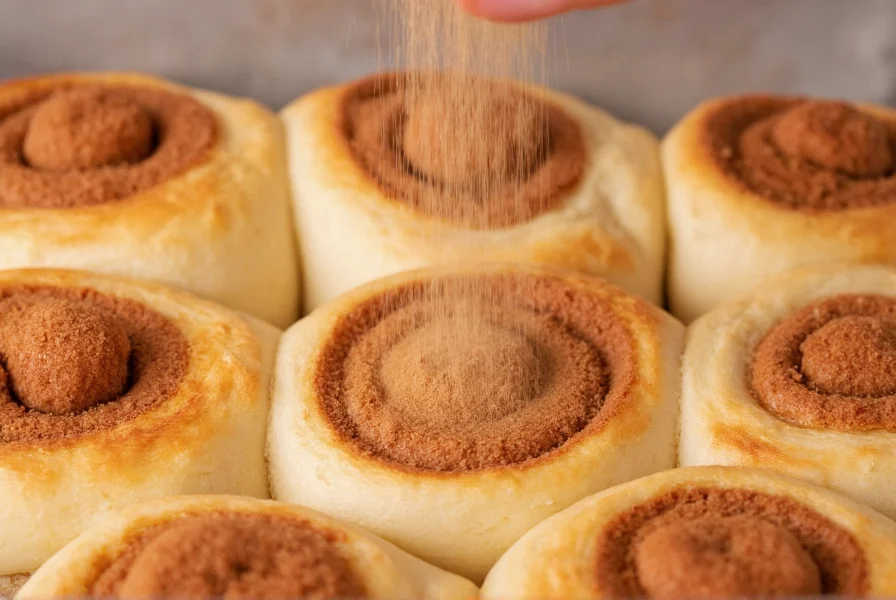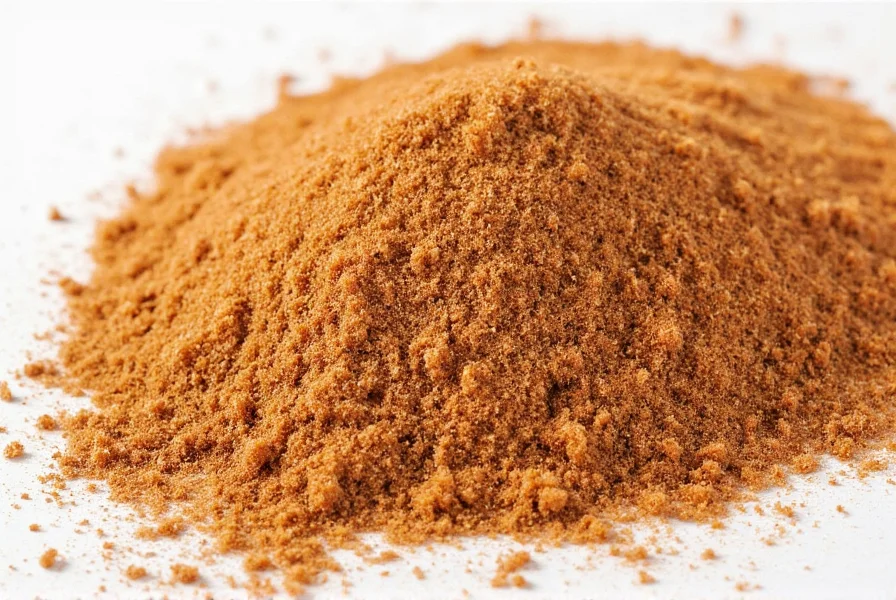Cinnamon sugar mix represents one of the simplest yet most transformative kitchen staples. This humble combination elevates ordinary foods with minimal effort, making it essential for home bakers and breakfast enthusiasts alike. Understanding the proper cinnamon sugar mix measurements ensures consistent results whether you're dusting apple slices or finishing homemade cinnamon rolls.
The Perfect Homemade Cinnamon Sugar Recipe
Creating your own cinnamon sugar mix guarantees freshness and control over ingredients. Commercial versions often contain anti-caking agents or inconsistent ratios that compromise flavor. The basic recipe requires just two ingredients:
| Ingredient | Standard Ratio | Stronger Flavor Ratio | Milder Flavor Ratio |
|---|---|---|---|
| Granulated Sugar | 1 cup | 1 cup | 1 cup |
| Ground Cinnamon | 4 tablespoons | 6 tablespoons | 2 tablespoons |
Combine ingredients in a small bowl and whisk thoroughly until uniform in color. For optimal flavor distribution, sift the mixture through a fine-mesh sieve. This simple homemade cinnamon sugar recipe produces approximately 1¼ cups of mix.
Why Homemade Beats Store-Bought
Commercial cinnamon sugar blends often contain cornstarch or other anti-caking agents that affect texture and flavor. When you make your own cinnamon sugar mix, you control:
- The quality of cinnamon (Ceylon vs Cassia)
- The exact sweetness level
- Additional flavor enhancements
- Absence of unnecessary additives
Professional bakers consistently prefer custom blends because they can adjust the perfect cinnamon sugar ratio based on specific applications. For delicate pastries, a milder 1:6 ratio works best, while churros benefit from the stronger 1:3 ratio.
Top Culinary Applications
This versatile mixture shines across multiple food categories. Understanding proper cinnamon sugar mix uses prevents waste and maximizes flavor impact.
Baked Goods Enhancement
Apply to:
- Rolling pin surfaces before shaping cinnamon rolls
- Finishing butter cookies and shortbread
- Mixing into coffee cake streusel toppings
- Coating apple fritters before frying
Breakfast Transformations
Simple applications that elevate morning meals:
- Sprinkling over oatmeal or yogurt
- Dusting French toast before serving
- Mixing with melted butter for toast topping
- Coating sliced bananas for a healthy dessert

Advanced Variations for Culinary Creativity
Once you've mastered the basic cinnamon sugar mix measurements, experiment with these professional variations:
Citrus-Infused Cinnamon Sugar
Add 1 teaspoon of finely grated orange or lemon zest per cup of standard mix. The citrus oils complement cinnamon's warmth, creating a complex flavor profile ideal for:
- Coating donut holes
- Finishing pound cake slices
- Enhancing fruit salads
Spiced Cinnamon Sugar Blend
For holiday baking, combine:
- 1 cup sugar
- 3 tablespoons cinnamon
- 1 teaspoon ground nutmeg
- ½ teaspoon ground cloves
- ¼ teaspoon allspice
This spiced variation works exceptionally well for pumpkin bread toppings and apple pie crust edges.
Proper Storage Techniques
Understanding how to store cinnamon sugar mix properly maintains freshness and prevents clumping:
- Use airtight glass or plastic containers
- Store away from heat sources and direct sunlight
- Include a silica gel packet to absorb moisture
- Maximum shelf life: 6 months at room temperature
For extended storage, freeze in a sealed container for up to 12 months. Bring to room temperature before using to prevent condensation.
Troubleshooting Common Issues
Even simple mixtures present challenges. Here's how to address frequent problems with cinnamon sugar mix:
Clumping Problems
Cause: Humidity exposure or improper storage
Solution: Sift mixture before use or add 1 teaspoon cornstarch per cup of mix
Uneven Flavor Distribution
Cause: Inadequate mixing or sifting
Solution: Always whisk thoroughly and sift through fine-mesh sieve
Bitter Aftertaste
Cause: Old or low-quality cinnamon
Solution: Replace cinnamon; use fresh, high-quality Ceylon cinnamon

Ingredient Quality Matters
The type of cinnamon significantly impacts your cinnamon sugar mix flavor profile. Two primary varieties exist:
- Ceylon cinnamon: Delicate, complex flavor with subtle citrus notes; lower coumarin content
- Cassia cinnamon: Stronger, more pungent flavor; higher coumarin levels; most common in US markets
For daily use, Ceylon provides a more nuanced flavor, while Cassia delivers the familiar bold taste many associate with traditional cinnamon rolls. When selecting ingredients for your homemade cinnamon sugar recipe, check expiration dates—ground cinnamon loses potency after 6-12 months.
Measuring Precision for Consistent Results
Accurate cinnamon sugar mix measurements prevent flavor imbalances. Follow these professional tips:
- Use measuring spoons, not eyeballing
- Spoon ingredients into measures rather than scooping
- Level off with straight edge for precision
- Store measuring spoons with mix for quick access
For large batches, use weight measurements: 200g sugar to 20g cinnamon creates the standard 10:1 ratio by weight, which differs slightly from volume measurements.
Frequently Asked Questions
What is the standard ratio for cinnamon sugar mix?
The standard ratio for cinnamon sugar mix is 1 part cinnamon to 4 parts sugar by volume. This translates to 4 tablespoons of cinnamon per 1 cup of granulated sugar. This ratio provides balanced flavor that works for most applications from dusting toast to finishing baked goods.
How long does homemade cinnamon sugar mix last?
Properly stored in an airtight container away from heat and moisture, homemade cinnamon sugar mix maintains optimal flavor for 6 months at room temperature. For extended freshness, store in the freezer where it will remain potent for up to 12 months. Always check for clumping or loss of cinnamon aroma before use.
Can I use brown sugar instead of white sugar in cinnamon sugar mix?
Yes, you can substitute brown sugar for white sugar in cinnamon sugar mix, but this creates a different flavor profile and texture. Brown sugar adds moisture and molasses notes, making it better suited for applications like coating fried foods or mixing into oatmeal. For dusting baked goods or creating crispy toppings, white sugar produces superior results due to its dry texture.
Why does my cinnamon sugar mix clump together?
Cinnamon sugar mix clumps due to moisture absorption from the air. To prevent clumping, store your mix in an airtight container with a silica gel packet to absorb humidity. If clumping occurs, sift the mixture through a fine-mesh sieve before use. Adding 1 teaspoon of cornstarch per cup of mix can also help maintain free-flowing texture.
What's the difference between Ceylon and Cassia cinnamon for cinnamon sugar mix?
Ceylon cinnamon offers a delicate, complex flavor with subtle citrus notes and lower coumarin content, making it suitable for daily use. Cassia cinnamon provides a stronger, more pungent flavor that many recognize as 'traditional' cinnamon taste but contains higher coumarin levels. For most cinnamon sugar applications, Cassia delivers the familiar bold flavor, while Ceylon creates a more nuanced blend for sophisticated palates.











 浙公网安备
33010002000092号
浙公网安备
33010002000092号 浙B2-20120091-4
浙B2-20120091-4